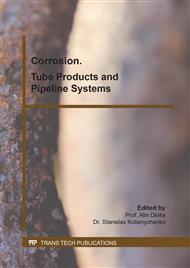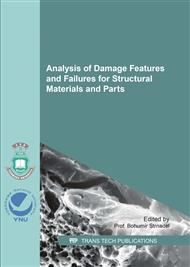p.19
p.25
p.31
p.36
p.42
p.50
p.57
p.63
p.70
Influence of Chloride for SCC Susceptibility on 15Cr Stainless Steel at High Temperatures under CO2 Environment
Abstract:
The effects of chloride ion concentration on SCC susceptibility of 15Cr and 13Cr martensitic stainless steels were investigated at 180°C by SSRT. Transgranular SCC occurred in the environment containing CO2 and chloride ion. The increasing chloride ion concentration was significantly affected SCC susceptibility of 15Cr SS. In addition, the contribution of hydrogen to SCC was examined at high temperature by SSRT with electrochemically polarization. The cathodically charged specimens showed hydrogen embrittlement. The fracture surface was similar to that of high temperature SCC. On the other hand, the SCC was accelerated by anodic polarization and not by cathodic polarization. The SCC behavior of martensitic stainless steel at high temperature is affect by evolved hydrogen atom. It is concluded that hydrogen plays a key role in the crack propagation.
Info:
Periodical:
Pages:
42-49
Citation:
Online since:
June 2017
Authors:
Keywords:
Price:
Сopyright:
© 2017 Trans Tech Publications Ltd. All Rights Reserved
Share:
Citation:



